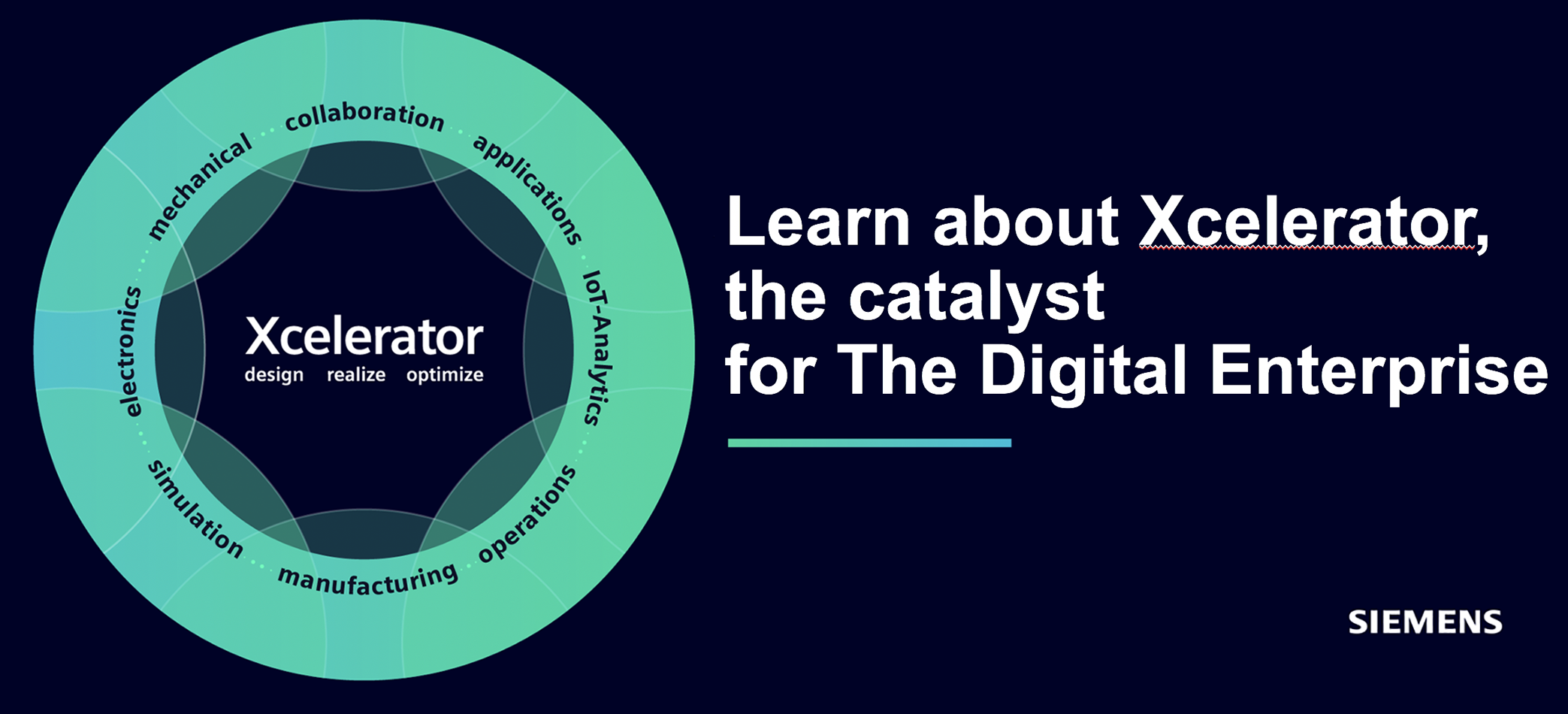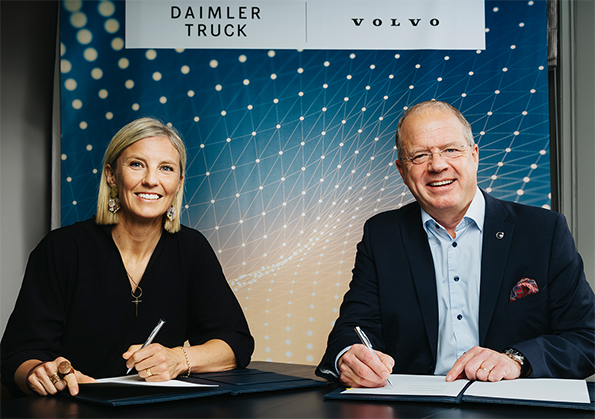What was announced from the companies in May this year was that Volvo Group and Daimler Truck will, ”create a joint venture to develop a common software-defined vehicle platform and a dedicated truck operating system, which forms the basis for future software-defined commercial vehicles.” When they now move forward with the plans, they have come to the conclusion of establishing the company with its headquarters in Gothenburg, Sweden.
Volvo Group’s CEO, Martin Lundstedt, states in a comment today that they are coming together to redefine software architecture and pioneer a new era of self-optimizing trucks:
“Together, we’re removing complexity so our customers can unlock higher levels of connectivity, security and efficiency and continually push for better performance. It is a revolutionary response to the challenges of our modern world, and we are proud to set the industry standard,” he says.
Moreover, the leadership of both companies is careful to emphasize that the software-defined vehicle platform will enable them and potential future customers of the joint venture to provide standalone digital vehicle functions for their products.
Leading the digital transformation
From Daimler Trucks’ side, CEO Karin Rådström says:
”The signing shows our joint commitment to leading the digital transformation of our industry. The software and hardware from this joint venture will be instrumental in achieving unprecedented levels of security, comfort and efficiency for our customers.”
The joint venture’s activities will include the specification and procurement of centralized high-performance control units for commercial vehicles that can handle large amounts of data. The new company will develop an operating system and tools that vehicle manufacturers can use as a basis for developing their own differentiating digital vehicle functions. This will decouple software and hardware development cycles in the future and enable customers to purchase and update digital applications wirelessly ”over the air”, ultimately improving customer efficiency and experience.
The transaction for the joint venture is expected to be completed in the first half of 2025, subject to obtaining all necessary regulatory approvals.
Demanding development work in terms of human resources
Volvo’s and Daimler’s 50/50 joint venture SDV deal; what could this initiative mean in terms of staffing? No details have been disclosed, but development of the software side related to SDV concepts can be extremely staff intensive. In this context, PLM&ERP News has pointed to Mercedes Benz’s software investments in the passenger car side. The company’s CSO, Chief Software Officer, Magnus Östberg, has in several articles emphasized the radical change in working methods that comes with the development of software-defined platforms. For Mercedes Benz, the investments in a sophisticated software related infrastructure required to meet the SDV concept amount to hundreds of millions of euros.
”The key to this is our state-of-the-art Electric Software Hub in Sindelfingen,” notes Östberg. “This has helped us gather software, hardware, system integration and testing functions under one roof. We have already recruited around 3,000 software developers worldwide, a third of whom will be based at ESH and work in 19 cross-functional departments.”
Doubtlessly it’s a challenge to form the capacity to handle increasingly complex software development and integration.
”An industrial drama,” says Siemens PLM chief Tony Hemmelgarn
But how do the larger PLM developers generally view the matter, SDV and the forward storming software technology as a supporting part of vehicle and transport industries? PLM&ERP News has taken a closer look at this in two articles:

- ”Survival of the Fittest”: How Siemens’ PLM division meets the shift in the automotive industry when software and electronics provide a completely new game plan
Meet Siemens Digital Industries Software’s CEO, TONY HEMMELGARN, in this interview. The claim that the car industry is going through a unique technologically explosive phase right now is no exaggeration, he notes. As AI, electrification, electronics and software—as some of the most prominent new technologies—pave the way and dramatically change product development, timing is everything, for everyone. The right tool at the right time is of the utmost importance. This not only affects PLM developers, such as the leading player in the automotive market, Siemens Digital Industries Software, but also fundamentally changes the situation of car manufacturers. Today’s are more connected, software-controlled, autonomous and electric than ever. Each of the vehicles contains, or will soon contain, millions of lines of code and must be able to handle tens of terabytes of data every day. This is a huge undertaking and it has led to a ”volcanic” change in the way several major vehicle manufacturers work, not least to now quickly build up sophisticated infrastructures for software development.
”What the automotive industry is going through is actually nothing less than an industrial drama,” says Tony Hemmelgarn, Siemens Digital Industries Software’s CEO and today the longest-serving executive in the entire PLM space. ”We are talking about survival of the fittest. The fight is fierce and there are three areas that stand out: Software/electronics, digital manufacturing processes and in a 5-10 year perspective the full impact of artificial intelligence.”
Hemmelgarn claims in this that Siemens is well equipped in terms of digital tools and industrial competence. ”The Xcelerator portfolio is the industry’s richest in terms of seamlessly integrated software solutions in everything from product development to manufacturing automation – we have what it takes to meet the needs of today’s automotive industry: Cloud, PLM/PDM, CAD design, simulation, EDA (Electronic Design Automation ), ALM (Application Lifecycle Management), Digital Manufacturing, Smart Factory Automation, etc. And we have worked hard and invested a lot to get there,” he said, adding, “During my years as head of Siemens PLM operations, from In 2017, we made 34 acquisitions aimed, among other things, at creating the complete set of tools for the comprehensive digital twin concept.” In today’s article, the focus is on software and electronics in the automotive industry, which according to Hemmelgarn ”created a fundamentally changed playing field.”

PTC and the software revolution in automotive
2. Also don’t miss reading the article: ”PTC and ALM – the software revolution in automotive leads to ”seismic changes in the way of working”
In this discussion, what does the future look like specifically for the PLM developer PTC in terms of the software area? The question is relevant, not least in that the ALM domain, Application Lifecycle Management, is one of the past decade’s absolute fastest growing areas in terms of share of development work.
No one will be able to stand aside from the development. Neither Volkswagen (VW), Mercedes Benz (MB), Volvo Cars nor the other big players in the automotive industry are immune to the winds of change.
For OEMs of the stature of VWs, MBs and Volvos with long analog industrial histories, the changes that come with the SDV concept are no Sunday walk in the park. The dynamic of development is inexorable; you have to move forward: SDV platforms do not only belong to the future in automotive and transport, ”it applies here and now,” states PTC’s Nordic manager, Filip Stål in this article on PLM&ERP News. VW’s forecasts back in 2020 were that a car would need to integrate up to 1 billion lines of code by 2025.
Software-defined vehicles, based on SDV platforms (Software Defined Vehicles) positions car manufacturers as software companies,” says Stål, quoting former VW boss Herbert Diess, who also predicted that over 90% of automotive innovation will to derive from software. VW is thus starting to build an infrastructure system for managing software, and PTC announced at the end of last year that the company’s Codebeamer and Windchill software will play important roles in supporting development. But it is also strengthening on the partner side with the German ALM specialist Nanga Systems, which under the new manager, Roger Thyrell, is launching a new Nordic-focused branch of the business.
Click on the linked headline above to read the full article on PLM&ERP News.






